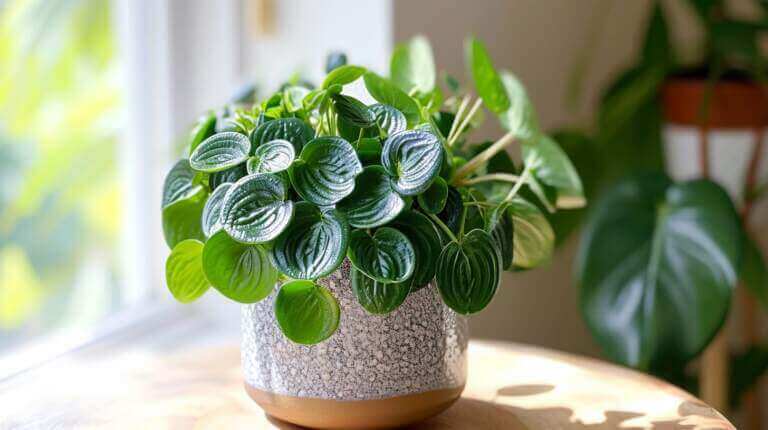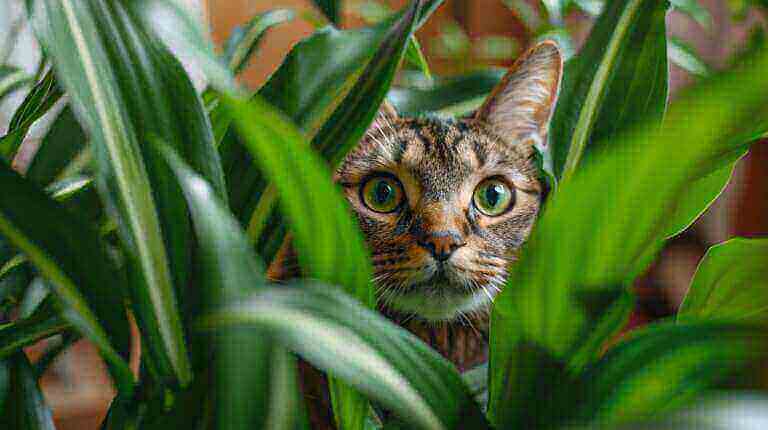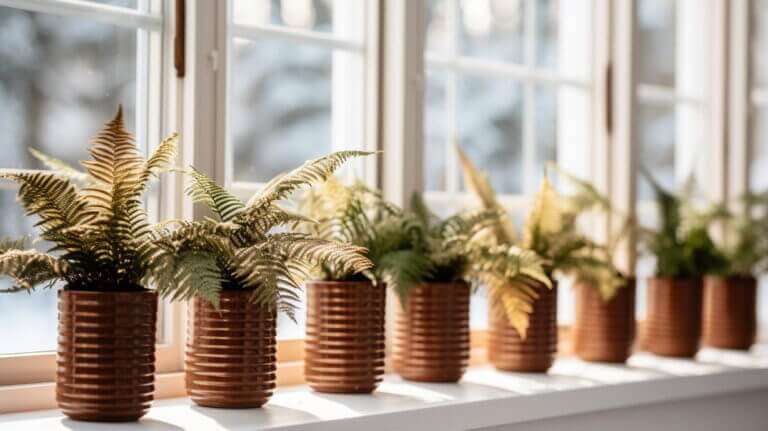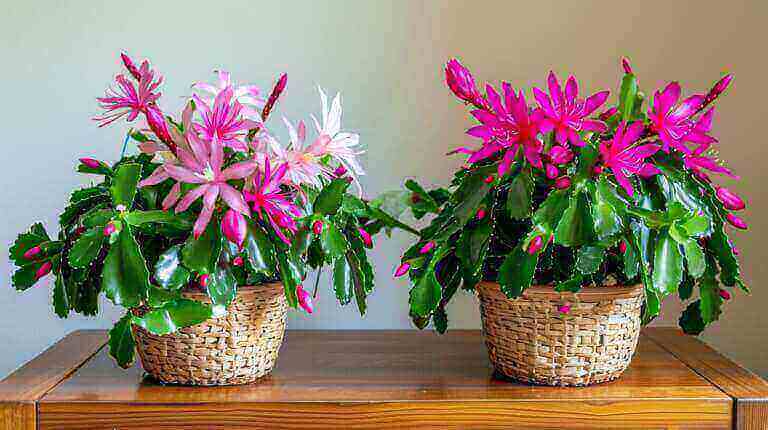How to Start Elephant Ear Bulbs Indoors Forcing Bulbs to Sprout Early
Are you eager to see lush and vibrant foliage in your garden? Starting elephant ear bulbs indoors is a great way to kickstart their growth and achieve stunning results. In this guide, I will walk you through the steps to successfully start elephant ear bulbs indoors and force them to sprout early.
Key Takeaways:
- Starting elephant ear bulbs indoors allows for early growth and lush foliage in your garden.
- Choose a pot with proper drainage and enough space for the bulb to grow.
- Use a basic potting mix with added vermiculite for enhanced drainage.
- Water the bulb fully at planting, then water sparingly until growth is visible above the soil.
- Place the pot in a warm room or on a heat mat with a soil temperature of around 65 degrees Fahrenheit.
The Benefits of Starting Elephant Ear Bulbs in Water Indoors
While elephant ears are typically planted in soil, there is also the option to start them in water indoors. This method allows for early growth and the ability to easily monitor the roots.
To start elephant ear bulbs in water, choose a healthy and plump bulb and place it in a tall vase or jar filled with pebbles or gravel for support. Add clean, chlorine-free water to the vase, covering the base of the bulb but not submerging it.
Place the vase in a bright, cool location and regularly check and refill the water as needed. Within a few weeks, you should start to see growth from the top of the bulb.
However, it’s important to note that this method may not always be successful, and it’s recommended to transplant the bulb into soil once the weather is warm enough.
The Benefits of Starting Elephant Ear Bulbs in Water Indoors:
- Allows for early growth
- Easy monitoring of roots
- Provides an alternative planting method
“Starting elephant ear bulbs in water can be a unique and effective way to jumpstart their growth. It’s a method that offers flexibility and allows you to closely observe the development of the roots. However, keep in mind that not all bulbs will thrive in water, so it’s important to be prepared to transition them to soil once they have sprouted.”
Comparison of Starting Elephant Ear Bulbs in Water vs. Soil:
| Starting Method | Benefits | Considerations |
|---|---|---|
| Water |
|
|
| Soil |
|
|
When and How to Plant Elephant Ear Bulbs in the Garden
Planting elephant ear bulbs in the garden requires proper timing and technique to ensure successful growth. It is important to wait until all signs of frost have passed and the soil temperature has reached a minimum of 65 degrees Fahrenheit. This typically occurs in the late spring or early summer, depending on your specific location.
To plant elephant ear bulbs, begin by preparing a hole that is 4-5 inches deeper than the soil line. Place the bulb in the hole with the pointed end facing upwards. Cover the bulb with 1-2 inches of soil and water thoroughly to provide initial hydration.
Elephant ears thrive in full sun or partial shade and prefer well-draining soil enriched with organic matter. Regular fertilization every 2-3 weeks with a general fertilizer will provide the necessary nutrients for healthy growth. Water the plants approximately 2-3 inches per week, allowing the soil to dry down between waterings. This will help prevent overwatering and root rot.
If you prefer to grow elephant ears in pots, ensure that the pot has a drainage hole to prevent waterlogged soil. Follow the same planting instructions as for garden planting, and provide adequate space for the bulb to grow within the pot.
| Planting Steps for Elephant Ear Bulbs | Benefits |
|---|---|
| Wait for frost-free conditions and soil temperature of 65°F | Ensures optimal growth conditions |
| Dig a hole 4-5 inches deeper than the soil line | Provides proper depth for bulb planting |
| Position bulb with pointed end facing upwards | Ensures proper positioning for growth |
| Cover bulb with 1-2 inches of soil | Provides sufficient soil coverage |
| Water thoroughly after planting | Hydrates the bulb and promotes root development |
| Choose a sunny or partially shaded location | Provides the appropriate amount of light |
| Use well-draining soil enriched with organic matter | Creates a nutrient-rich growing environment |
| Fertilize every 2-3 weeks with a general fertilizer | Supplies essential nutrients for healthy growth |
| Water 2-3 inches per week, allowing soil to dry down between waterings | Prevents overwatering and root rot |
| For pot planting, ensure the pot has a drainage hole | Prevents waterlogged soil in containers |
Overwintering Elephant Ear Bulbs Indoors for Year-Round Growth
When winter arrives and temperatures drop, it’s time to consider how to protect your precious elephant ear bulbs for year-round growth. In colder zones where elephant ears are not frost-hardy, it is necessary to dig up the bulbs before the first frost and store them indoors. By following a few simple steps, you can ensure the survival of your elephant ear bulbs and enjoy their lush foliage year after year.
To overwinter elephant ear bulbs indoors, start by gently digging up the bulbs in the fall, being careful not to damage the delicate roots. Shake off any excess soil and inspect the bulbs for any signs of damage or rot. It’s important to remove any damaged or diseased bulbs as they can affect the health of the entire collection.
Once the bulbs are clean and dry, it’s time to store them for the winter. Find a cool and dry place, such as a basement or garage, where the temperature remains around 50-55 degrees Fahrenheit. Place the bulbs in a paper bag or a container filled with dry peat moss or vermiculite. These materials will help absorb excess moisture and prevent the bulbs from drying out.
During the winter months, it’s important to periodically check on the stored bulbs. Inspect them for any signs of rot or drying out. If you notice any bulbs starting to rot, it’s essential to remove them immediately to prevent the spread of disease to the healthy bulbs. With proper care and monitoring, your elephant ear bulbs can remain healthy and ready for replanting in the garden or transferring into larger pots when the danger of frost has passed.
Tips for Overwintering Elephant Ear Bulbs Indoors:
- Choose healthy bulbs without any signs of damage or rot.
- Store the bulbs in a cool and dry place with a temperature of around 50-55 degrees Fahrenheit.
- Use a paper bag or container filled with dry peat moss or vermiculite to keep the bulbs dry.
- Regularly check the bulbs for any signs of rot or drying out.
- Remove any damaged or diseased bulbs to prevent the spread of disease.
| Common Questions | Answers |
|---|---|
| How long do elephant ear bulbs live indoors? | With proper care and storage, elephant ear bulbs can live indoors for several months during the winter. |
| Can I grow elephant ears in pots indoors? | Yes, elephant ears can be grown in pots indoors as long as the pots have proper drainage and the same planting instructions are followed. |
Common Care Tips and Troubleshooting for Growing Elephant Ear Bulbs
When it comes to caring for elephant ear bulbs, there are a few key tips to keep in mind. First, it’s important to understand that these plants thrive in warm and humid conditions. Indoor growth of elephant ear plants provides numerous benefits, including the addition of greenery to your home and air purification. To ensure successful growth, here are some care tips:
- Light: Elephant ear plants require bright light to thrive. Place them in a location with ample sunlight or use a grow light if necessary.
- Timing: Start the bulbs indoors approximately six weeks before the last frost date to promote early growth.
- Watering: Provide regular watering, allowing the soil to dry slightly between waterings. Overwatering can lead to root rot, so it’s important to find the right balance.
- Fertilization: To promote healthy growth, fertilize the plants every 2-3 weeks with a balanced fertilizer. This will provide essential nutrients for lush foliage.
- Pest Control: Keep an eye out for common pests such as aphids and spider mites. If infestations occur, take appropriate action to eliminate them.
It’s also important to note that elephant ear plants cannot tolerate freezing temperatures or prolonged exposure to cold drafts. Protect them accordingly and maintain a warm and humid environment for optimal growth.
Common Troubleshooting Tips for Elephant Ear Bulbs:
| Issue | Possible Cause | Solution |
|---|---|---|
| Yellowing leaves | Overwatering or underwatering | Adjust watering schedule to maintain moist but not wet soil. Ensure proper drainage to prevent waterlogged roots. |
| Brown spots on leaves | Excessive direct sunlight or nutrient deficiency | Move the plant to a location with filtered sunlight. Fertilize regularly to provide essential nutrients. |
| Stunted growth | Insufficient light or lack of nutrients | Ensure the plant is receiving adequate light and fertilize regularly to promote healthy growth. |
| Wilting or drooping leaves | Underwatering or root rot | Adjust watering schedule to provide adequate moisture. Check for signs of root rot and take appropriate action if necessary. |
By following these care tips and troubleshooting guidelines, you can successfully grow and maintain lush and vibrant elephant ear bulbs in your indoor space. Enjoy the beauty and tropical feel these plants bring to your home!
Tips for Growing Different Varieties of Elephant Ear Bulbs
When it comes to growing different varieties of elephant ear bulbs, such as colocasia and alocasia, the process is quite similar. Starting colocasia bulbs indoors can be done following the same steps mentioned earlier. If you prefer, you can also find helpful tutorials on starting colocasia bulbs indoors on YouTube.
Similarly, alocasia bulbs can be started indoors in water before being transplanted into soil. This method allows for easy monitoring of the roots and promotes early growth. There are also informative videos available on YouTube that provide step-by-step instructions on starting alocasia bulbs indoors in water.
It’s important to note that alocasia bulbs are typically referred to as corms. After planting and establishing the bulbs, they can be stored for the winter using the same method mentioned in section 4 for elephant ear bulbs. Proper storage is crucial to ensure the bulbs remain healthy and ready for the next growing season. If you’re looking for information on how to store alocasia bulbs, there are resources available that can guide you through the process.
In addition, if you’re interested in growing alocasia bulbs in water, there are specific techniques you can follow to ensure success. These techniques involve using water as the growing medium instead of traditional soil. Resources, including tutorials and guides, are available that can walk you through the process of growing alocasia bulbs in water.
FAQ
How do I start elephant ear bulbs indoors to force them to sprout early?
To start elephant ear bulbs indoors, you will need a pot with a drainage hole and enough space for the bulb to grow. Plant the bulb with the pointed end facing upwards and cover with at least 2 inches of soil. Water the bulb fully at planting, then water sparingly until growth is visible above the soil. Provide bright light or use a grow light if necessary.
Can I start elephant ear bulbs in water indoors?
Yes, you can start elephant ear bulbs in water indoors. Choose a healthy bulb and place it in a tall vase or jar filled with pebbles or gravel for support. Add clean, chlorine-free water to the vase, covering the base of the bulb but not submerging it. Place the vase in a bright, cool location and refill the water as needed. Transplant the bulb into soil once the weather is warm enough.
When should I plant elephant ear bulbs in the garden?
Plant elephant ear bulbs in the garden once all signs of frost are gone and the soil has reached a temperature of 65 degrees Fahrenheit. Dig a hole that is deeper than the soil line and plant the bulb with the pointed end facing upwards. Water thoroughly and provide full sun or partial shade.
How do I overwinter elephant ear bulbs indoors?
Dig up the bulbs in the fall and store them in a cool, dry place, such as a basement or garage. Place the bulbs in a paper bag or container filled with dry peat moss or vermiculite. Check the bulbs every few weeks for any signs of rot or drying out. In warmer climates, elephant ears can be grown as houseplants indoors.
What are some common care tips for growing elephant ear bulbs indoors?
Provide bright light or use a grow light, start the bulbs indoors 6 weeks before the last frost, water regularly but avoid overwatering, and fertilize every 2-3 weeks with a balanced fertilizer. Monitor for pests and protect from freezing temperatures and cold drafts.
How do I grow different varieties of elephant ear bulbs?
The planting and care instructions for different varieties, such as Colocasia and Alocasia, are similar. Start Colocasia bulbs indoors following the same steps. Alocasia bulbs can also be started in water before transplanting into soil. Store the bulbs using the same method mentioned for elephant ear bulbs, and research the specific requirements for the variety you are growing.







